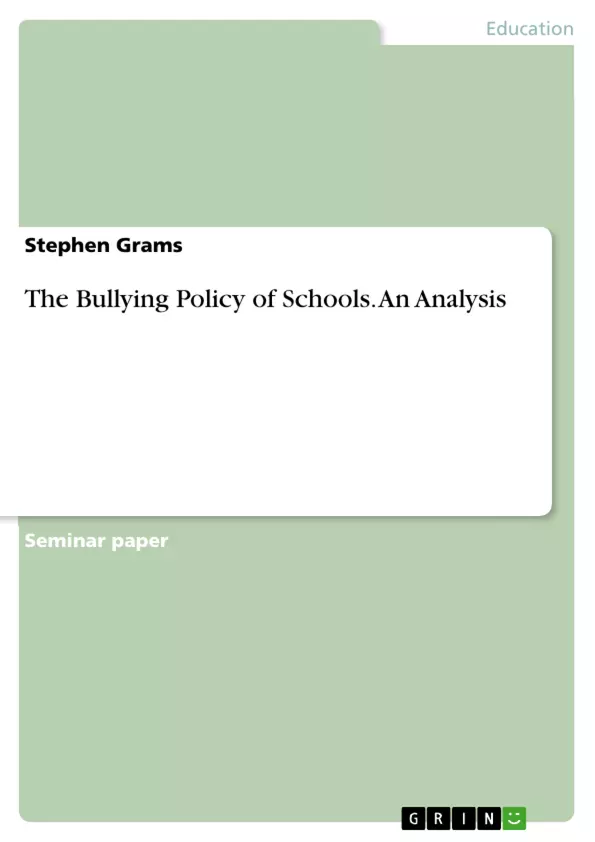Bullying is defined as systematically and chronically inflicting physical hurt or psychological distress and has the effect of doing any of the following: substantial interference with a student’s education, creation of a threatening environment, substantial disruption of the orderly operation of the school. This problem is not limited to the school day. Victims of bullying also suffer in after-school programs such as athletics. The purpose of this essay is to compare and contrast two K – 12 school district bullying policies: Walton County School District in Florida and YYYY School District in Pennsylvania. Both of these are public school districts that officially enacted an anti-bullying policy in 2008 in response to the alarming number of bullying cases being reported across the United States. The comparison between the two policies will be made in terms of language, procedural steps and reporting, and the perceived effectiveness of the two policies in hopes to determine commonalities as well as differences that make each policy effective in its given district.
Inhaltsverzeichnis (Table of Contents)
- Policy Language
- Procedural Steps
- Reporting
- Perceived Effectiveness of the Policies
Zielsetzung und Themenschwerpunkte (Objectives and Key Themes)
This essay aims to compare and contrast the bullying policies of two K-12 school districts, Walton County School District in Florida and YYYY School District in Pennsylvania, focusing on their language, procedural steps, reporting mechanisms, and perceived effectiveness. The analysis seeks to highlight commonalities and differences that contribute to each policy's effectiveness within its respective district.
- Comparison of policy language in terms of scope, specificity, and inclusion of employees.
- Analysis of procedural steps for reporting and addressing bullying incidents.
- Evaluation of the reporting mechanisms and their impact on student safety.
- Assessment of the perceived effectiveness of each policy in creating a safe learning environment.
- Exploration of the influence of district size, demographics, and geographic location on policy development and implementation.
Zusammenfassung der Kapitel (Chapter Summaries)
- Policy Language: The essay begins by comparing the language of the two policies, focusing on key differences in scope, specificity, and inclusion of employees. It highlights how the size and composition of the districts might influence the policies' language.
- Procedural Steps: The next section delves into the procedural steps outlined in each policy for reporting and addressing bullying incidents. It examines how these steps differ between the two districts.
- Reporting: This section focuses on the reporting mechanisms included in each policy and analyzes their potential impact on student safety. The analysis considers the effectiveness of these mechanisms in promoting open communication and accountability.
- Perceived Effectiveness: The final section explores the perceived effectiveness of each policy in creating a safe learning environment. It examines the challenges and successes experienced by each district in implementing and enforcing their policies.
Schlüsselwörter (Keywords)
This essay examines the language, procedural steps, reporting mechanisms, and perceived effectiveness of bullying policies in two K-12 school districts. It explores key concepts such as policy comparison, school safety, student protection, reporting procedures, and district demographics. The analysis aims to provide insights into the challenges and strategies involved in developing and implementing effective anti-bullying policies.
- Arbeit zitieren
- Stephen Grams (Autor:in), 2018, The Bullying Policy of Schools. An Analysis, München, GRIN Verlag, https://www.grin.com/document/458807



